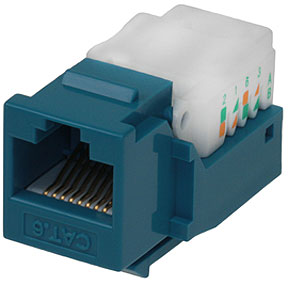The Internet is an ever-growing phenomenon experiencing diversity as well as stable advancements. In the present scenario, you can connect with your loved ones through a quick video call around the world and even when on the flight!
One other such phenomenon is Power of Ethernet (PoE). The main advantage of PoE is speedy delivery of data. It eliminates the need for AC/DC power suppliers and outlets. Plus, it costs almost nothing because remote installation has lower costs than fiber as there is no electrician required.
Because of its cost-effectiveness and speed advantages, most of the buildings prefer them for installation to achieve a stable network system.
People around the world invest billions of dollars into this kind of development every year. PoE’s main aim is to squeeze out possible high speed and power from existing cabling and eventually grow into an established IT marketplace. Any size of organization can attain the benefits of Power over Ethernet into their networks with the right application of PoE.
And in the next segment, we have talked about the right application of PoE in order to get the best out of it.
The Right Application Of PoE
With the help of PoE, you can add a device in remote locations or any outskirt places. It is a boon for the wireless access point, CCTV camera placements, digital signage on the top or sides of skyscrapers. It is best suitable for IT network usage. You can boost small and out-of-the-way networks for distances beyond 100 meters/300 feet for a single device with the PoE injections. You can even apply it over existing copper telecom infrastructure.
Don’t Use PoE When…
It does not support sending network data over long distances, extreme temperatures. Despite that, you can apply it if the industrial designation is present.
Things You Must Know About PoE
The reason this technology wave is getting such traction is great data speed and power which is getting improved simultaneously with each new standard. Let’s understand some basic details about PoE that you need to know.
Data Speeds Offered By PoE
The main advantage: It costs lesser than the fiber and delivers higher data speed. The widespread adoption of IEEE 802.3bz technology made manufacturers spend more on product development. The current data delivery rates are 1Gbps over Cat5e and cat6. The new standard IEEE 802.3bx has the capacity to deliver data at a speed of 2.5 to 5 Gbps over 100m with an immediate view toward 10 Gbps.
To stream High-definition you require 400 Mbps. You can easily stream a training video in a short span of time. In short, it has enough data speed to support devices in a small LAN.
Delivery Standards Of PoE
One of the major things is that PoE doesn’t require any additional power supply. It runs over one cable. Previously it developed standard IEEE 802.3at which renders 30.8W of power. IEEE 802.3bt is the most recently developed standard which provides 60W of power.
Supported Devices
The list of PoE supported devices is increasing. In fact, manufacturers are developing new network devices with the convenience of PoE in mind. It works indoors and outdoors. At the places where there are extreme temperatures, installers keep cables and devices in protected areas under eaves, shades, etc.
The latest standard IEEE 802.3 bt supports legacy devices. These devices do not support PoE standards. These devices might be a part of a PoE network inexpensively through the use of a splitter. Video phones, speed dome cameras, and WiMax wireless access points are some of the examples of PoE devices. It also includes devices like thin clients, point-of-sale systems, laptops, and digital signage.
Costs With PoE Installation
The installation costs are lesser than connecting the networking products with fiber network cabling as we have mentioned several times before. Cat5e and Cat6 cables which are available in almost all the infrastructures, and recent addition Cat6 cables are less expensive than the fiber cables in terms of installation.
Nowadays, both PoE networking products and compatible devices are becoming a plug and play. PoE is making feasible network upgrades from the cost and IT resource perspective. Because of power delivery through the cable, there is no need to have a contractor to install an electrical outlet for remote devices.
From a technical perspective, PoE is an important solution. It started just to get better signals on existing wiring and better data speeds.
How To Upgrade To Power Over Ethernet?
It’s an easy and straightforward process. Connect other devices to a PoE switch as usual and the switch will detect the compatible devices and enable power automatically. You can easily upgrade powered devices such as IP cameras with a splitter. The latest standard IEEE 802.3 bt supports legacy devices and other devices which do not support PoE standard can be in the network inexpensively using a splitter.
PoE is there in any design where data passes over an Ethernet cable. The spare pairs pass the power via the center tap of the data transformer. This way, PoE can support high-speed data transfers.
This Blog is Originally posted here; https://www.sfcable.com/blog/power-over-ethernet-things-know
If you found this Blog useful, here are some other Blogs that may be of interest.

 Log in with Facebook
Log in with Facebook 







